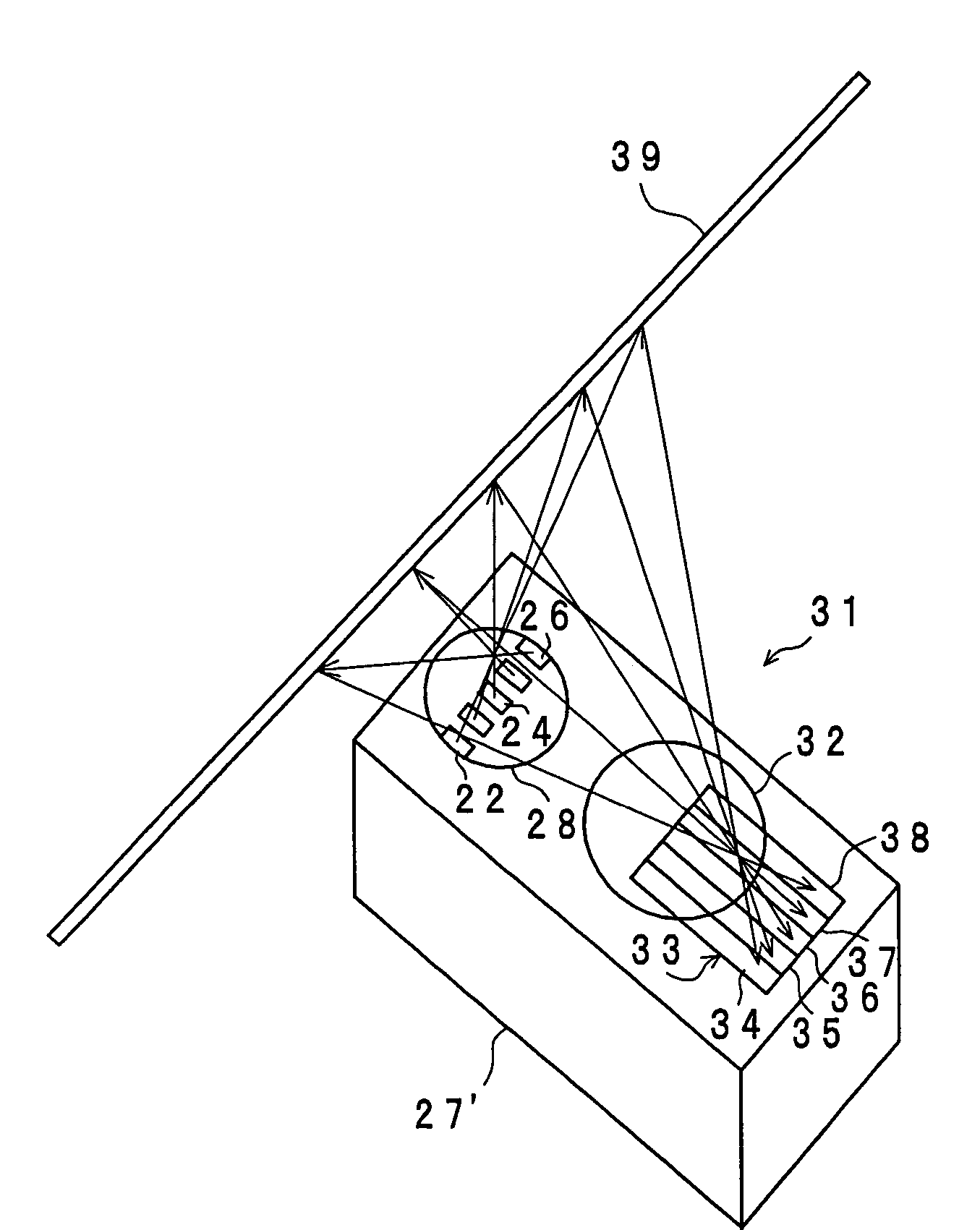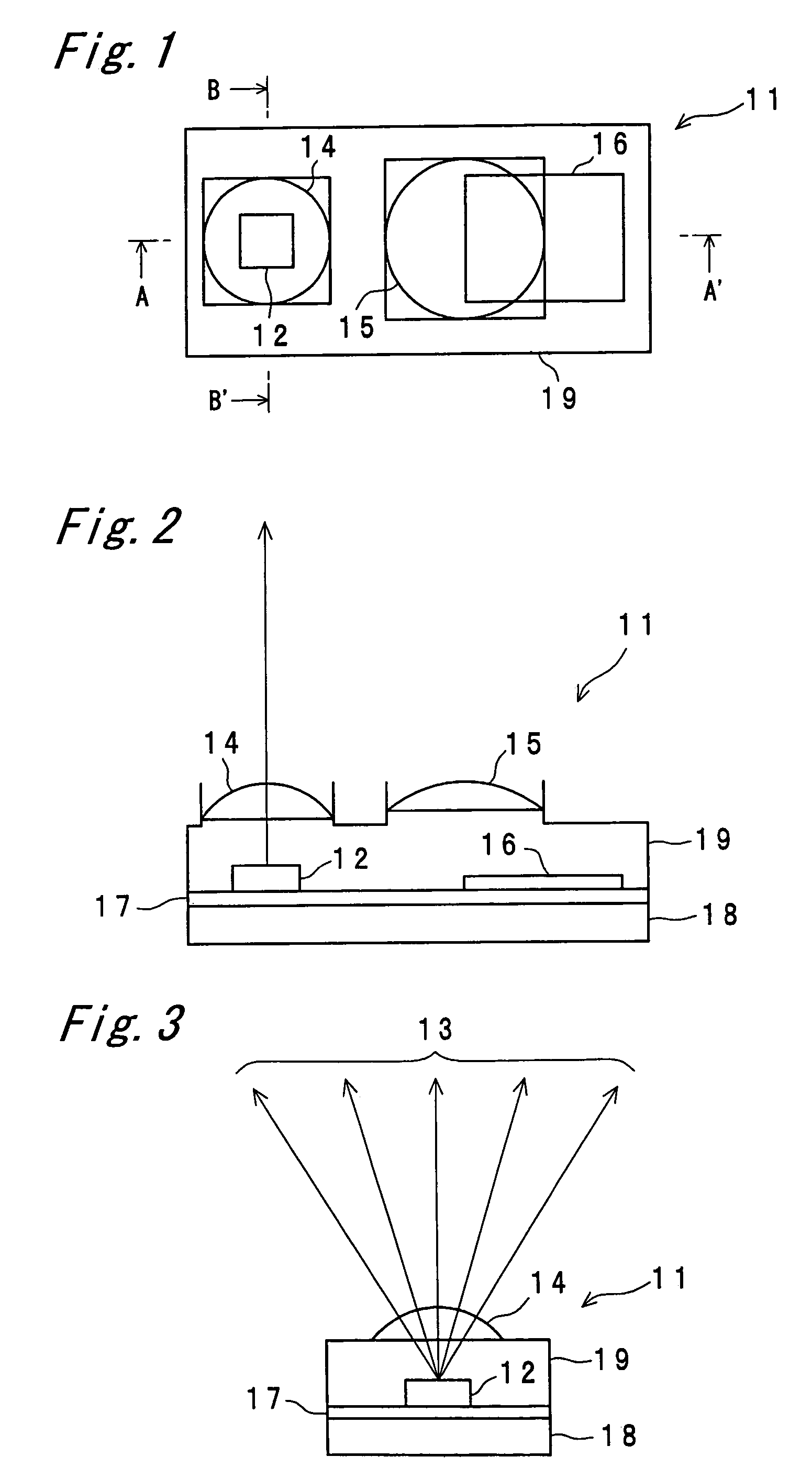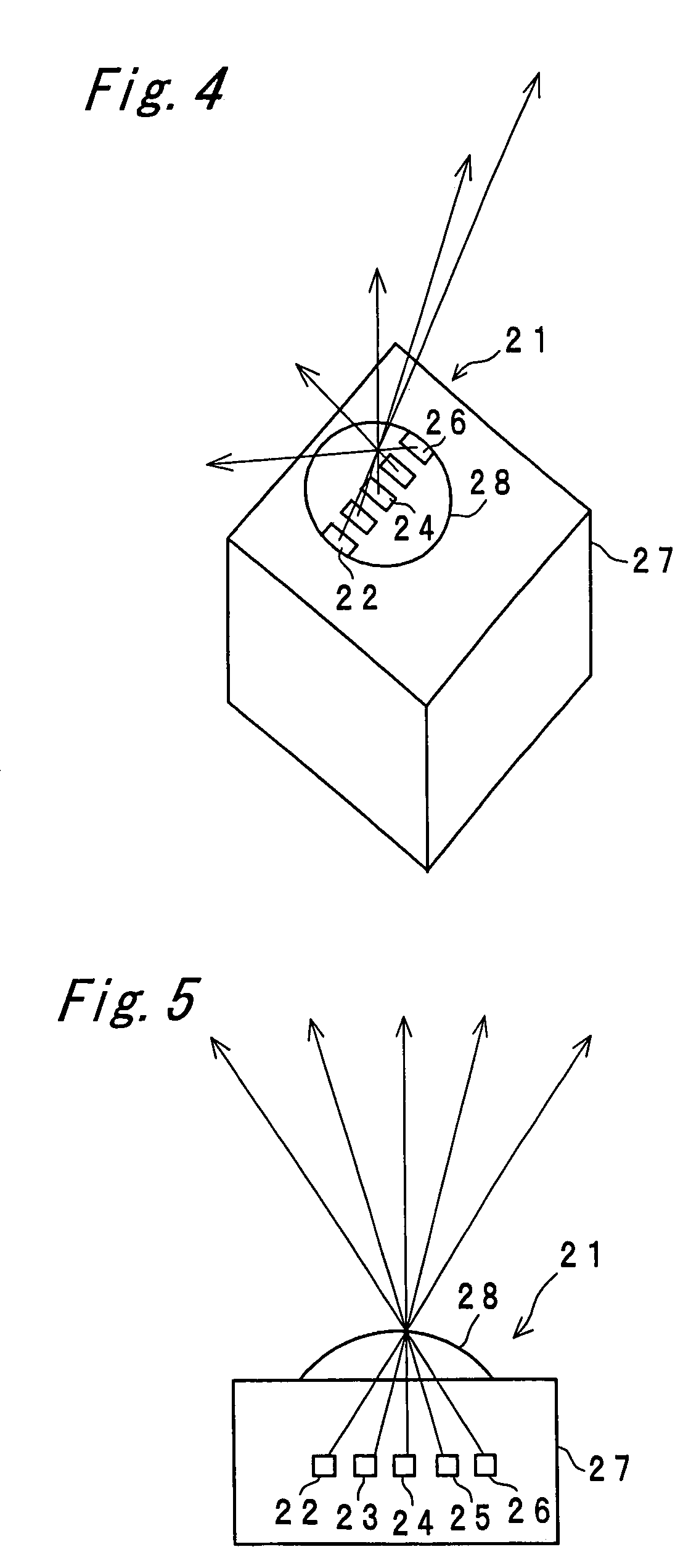Multiple ranging apparatus
a multi-range, multi-stage technology, applied in the direction of distance measurement, instruments, focusing aids, etc., can solve the problems of inability to identify, take a considerable length of time to carry out the ranging, and the conventional multi-range apparatus has such a disadvantage, so as to achieve the effect of efficient condensation
- Summary
- Abstract
- Description
- Claims
- Application Information
AI Technical Summary
Benefits of technology
Problems solved by technology
Method used
Image
Examples
first embodiment
[0066]FIG. 1 is a perspective plan view showing a schematic configuration of a multiple ranging apparatus of the embodiment. FIG. 2 is a sectional view taken along a line A-A′ of FIG. 1. FIG. 3 is a sectional view taken along a line B-B′ of FIG. 1. As shown in FIG. 3, the multiple ranging apparatus 11 has a light emitting section 12 which is capable of radiating a plurality of light rays 13 having a plurality of wavelengths. The plurality of light rays 13 radiated from the light emitting section 12 are passed through and condensed by a lens 14 and then are struck on and scattered by an object (not shown). Part of the scattered rays are condensed by a light receiving lens 15 onto a light receiving section 16, and the light rays having the plurality of wavelengths are separately received by the light receiving section 16. Reference numeral 17 denotes a frame which is formed on a substrate 18 and on which the light emitting section 12 and the light receiving section 16 are placed. Nume...
first example
[0068]FIGS. 4 and 5 are a perspective view and a vertical sectional view, respectively, of a light emitting device 21 having the wavelength multiplying unit. The light emitting device 21 actually has a structure in which the light emitting section placed on the frame formed on the substrate is sealed with transparent resin, as shown in FIGS. 1 and 2. However, for simplification (ditto for second and third examples below), the light emitting section in FIGS. 4 and 5 is represented as one which is simply sealed with transparent resin.
[0069]In the light emitting device 21, five LEDs 22-26 are arranged in a row and are sealed with transparent resin 27. A lens 28 is formed on a top surface of the transparent resin 27 which is located over the LEDs 22-26. Wavelengths of light rays radiated from the LEDs 22-26 differ from one another. Chief rays from the LEDs 22-26 are on extension of lines connecting a center of the lens 28 and light emission positions of the LEDs 22-26. In the example, t...
second example
[0080]FIGS. 8 and 9 show a configuration of a light emitting device 41 in this example. In the light emitting device 41, five LEDs 42-46 are arranged in a row and are sealed with transparent resin 47. A lens 48 is formed on a top surface of the transparent resin 47 located over the LEDs 42-46. Light rays radiated from the LEDs 42-46 have the same wavelength. Chief rays from the LEDs 42-46 are on extension of lines connecting a center of the lens 48 and light emission positions of the LEDs 42-46. The lens 48 is arranged so that a principal axis thereof is superimposed on a chief ray from the LED 44 positioned at center.
[0081]At positions through which the chief rays extending from the LEDs 42-46 to the lens 48, optical filters 49-53 are provided which permit only light rays having specific wavelengths different from one another to pass through. Therefore, the light rays of the same wavelength emitted from the LEDs 42-46 are subjected to wavelength selection by the optical filters 49-...
PUM
 Login to View More
Login to View More Abstract
Description
Claims
Application Information
 Login to View More
Login to View More - R&D
- Intellectual Property
- Life Sciences
- Materials
- Tech Scout
- Unparalleled Data Quality
- Higher Quality Content
- 60% Fewer Hallucinations
Browse by: Latest US Patents, China's latest patents, Technical Efficacy Thesaurus, Application Domain, Technology Topic, Popular Technical Reports.
© 2025 PatSnap. All rights reserved.Legal|Privacy policy|Modern Slavery Act Transparency Statement|Sitemap|About US| Contact US: help@patsnap.com



